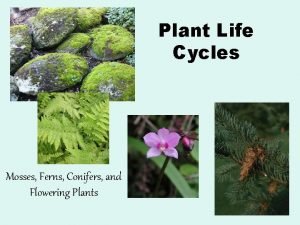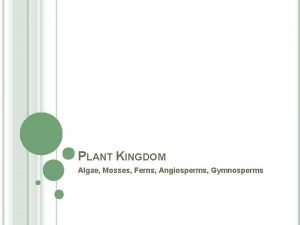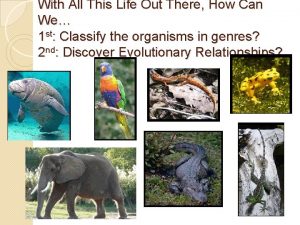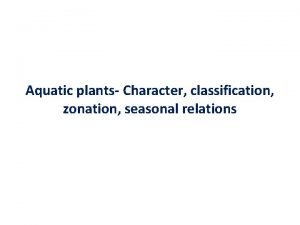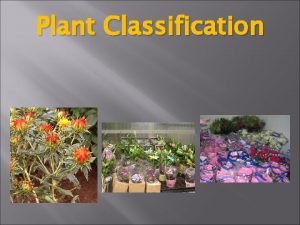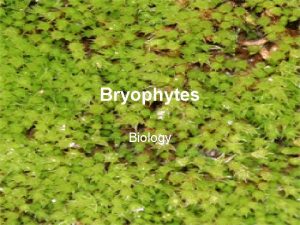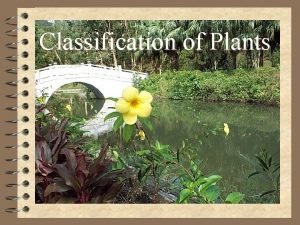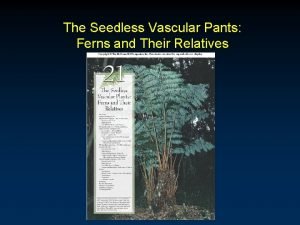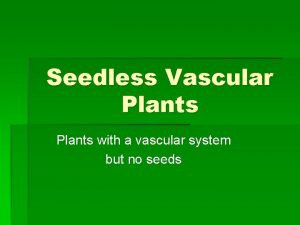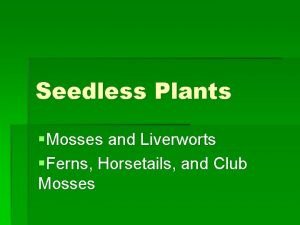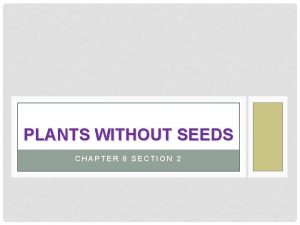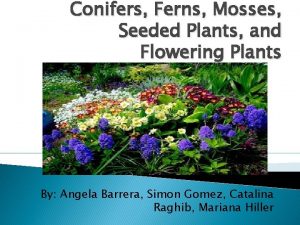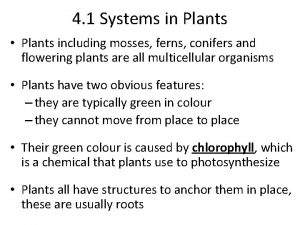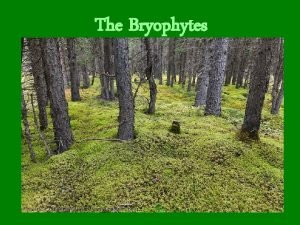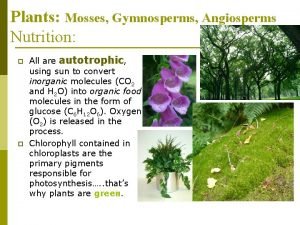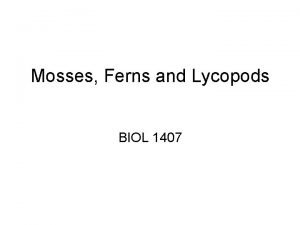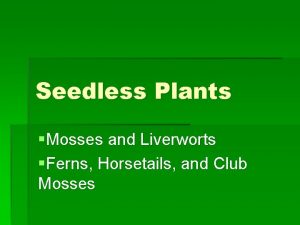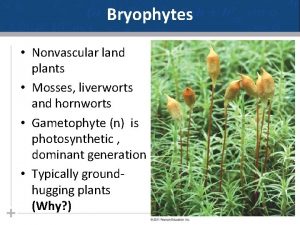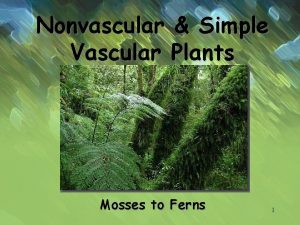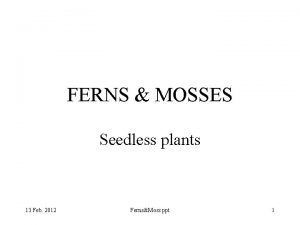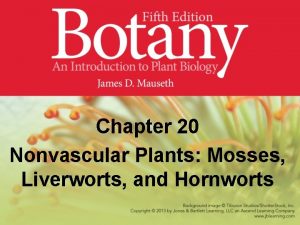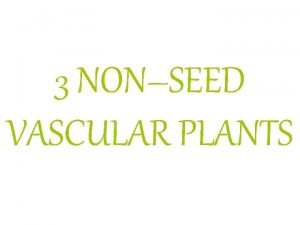How plants are classified Mosses Mosses are flowerlessseedless















- Slides: 15

How plants are classified

Mosses • Mosses are flowerless/seedless plants. They reproduce by spores. They are plants that most people have seen but many have ignored. The most commonly found group is the green mosses that cover rotting logs, grow on the bark of trees, and grow in the spray of waterfalls, along streams and in bogs. Even though mosses often thrive in wet habitats, some mosses and some liverworts can survive in quite dry environments such as sandy soils and exposed rock outcrops.


Ferns are a group of non-flowering plants that reproduce by releasing spores rather than seeds and they include the true ferns and other graceful, primarily forest-dwelling plants. There about eleven thousand different species of ferns making them the most diverse land plants after the flowering plants (angiosperms).


Cycads The 220 species of the non-flowering cycads are found in the tropics. Most of them look like ferns, having a cluster of long fronds growing from a central stalk but they have male and female cones containing seeds. Cycads appeared in the fossil record about 230 million years ago.


Ginkgo biloba There is only one species of ginkgo. It is a tree, sometimes growing to a large size, native to China but widely planted around the world. Ginkgo is often referred to as a "living fossil" because nearly identical plants are known from fossils nearly 200 million years old.


Conifers With around 588 living species, this is the largest gymnosperm group. Conifers grow in all climates and on all continents except Antarctica. They all bear their seeds within a cone or a structure resembling a berry. Most conifers are trees. Conifers appeared in the fossil record about 290 million years ago and have been an ecologically important, widespread group ever since then.


Angiosperms-flowering plants The angiosperms are plants whose seeds develop within a surrounding fruit. This can easily be seen by slicing into a tomato, for example. Some defining characteristics of angiosperms include flowers, carpels and the presence of endosperm, a food substance found in seeds.


Algae are a diverse group of aquatic living things, that like plants have the ability to conduct photosynthesis (make their own food using light energy). Certain algae are familiar to most people; for instance, seaweeds, blanket weed in ponds and single celled forms found in plankton. Originally algae were classified as plants but as they have no proper roots, stems, leaves or produce spores or seeds they are now put in the group called protists.

 Antigentest åre
Antigentest åre Conifer flowering plant
Conifer flowering plant Mosses ferns gymnosperms angiosperms
Mosses ferns gymnosperms angiosperms Create a cladogram of five indoor plants
Create a cladogram of five indoor plants Aquatic plants classification
Aquatic plants classification Tagetes lower classifications
Tagetes lower classifications Characteristics of non flowering plants
Characteristics of non flowering plants C3 plant
C3 plant Reproduce by spores
Reproduce by spores Vascular vs nonvascular plants
Vascular vs nonvascular plants Mosses and their relatives are generally called
Mosses and their relatives are generally called Classify non flowering plants
Classify non flowering plants Ferns and their relatives
Ferns and their relatives Lycophyta examples
Lycophyta examples Ferns, horsetails, and club mosses
Ferns, horsetails, and club mosses Chapter 8
Chapter 8

